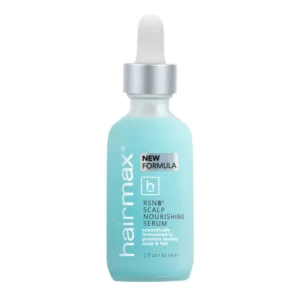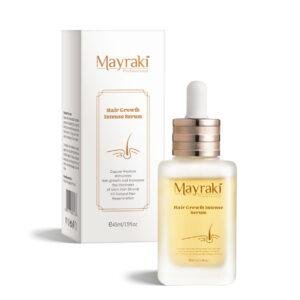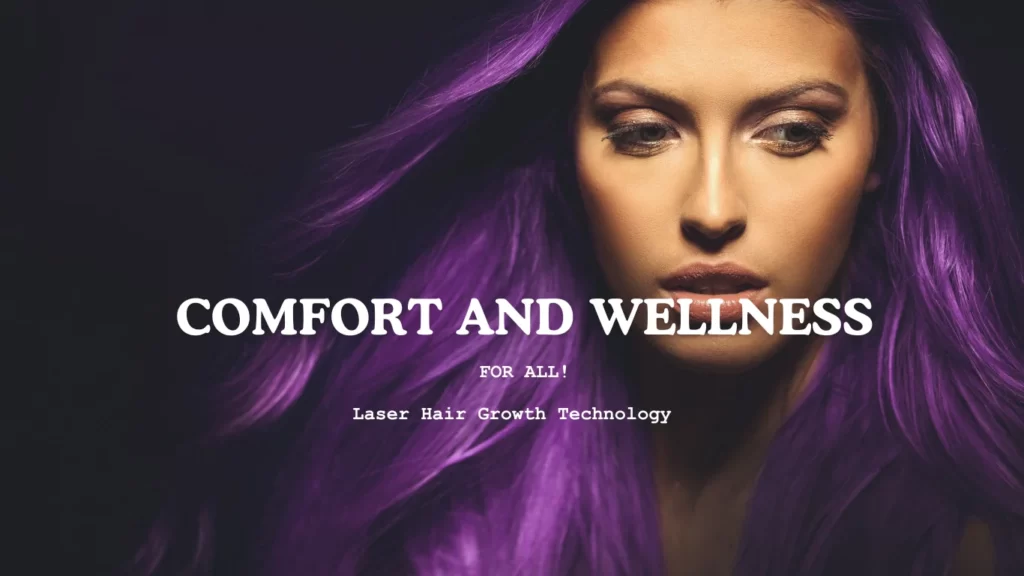Table of Contents
ToggleIntroduction:
Fixing Up Damaged Hair? Many people worry about hair damage. Knowing what causes it is the first step to fixing it. Several factors contribute to hair damage, including heat styling, chemical treatments, environmental elements, and inadequate hair care practices.
Heat styling, such as the frequent use of blow dryers, flat irons, and curling wands, can lead to significant hair damage. These tools strip the hair of its natural moisture, resulting in dryness and brittleness.
Chemical treatments like hair dyeing, perming, and relaxing change the hair’s structure. These processes can weaken hair, making it more likely to break and develop split ends.
Environmental Factors:
Environmental factors also play a crucial role in hair health. Long exposure to the sun’s UV rays, pollution, and bad weather can damage the hair’s cuticle. This can cause dryness and dullness. Additionally, chlorine and saltwater from swimming can strip the hair of its natural oils, exacerbating the damage.
Poor hair care practices are another significant contributor to hair damage. Washing hair too much, using strong shampoos, and not conditioning well can remove essential oils. This can cause dryness and brittleness. Neglecting regular trims can result in split ends, which, if left untreated, can travel up the hair shaft, causing further breakage.
Types Of Hair Damages:
The types of hair damage are varied but generally include split ends, breakage, dryness, and dullness. Split ends occur when the protective outer layer of the hair cuticle wears away, causing the hair to split into two or more strands.
Breakage is often a result of weakened hair structure, leading to short, broken pieces of hair. Dryness is characterized by a lack of moisture, making the hair feel brittle and rough. Dullness occurs when the hair lacks shine and appears lifeless.
Recognizing the signs of damaged hair is crucial for addressing the underlying issues. By knowing the causes and types of hair damage, people can take steps to restore their hair’s natural shine and health.
Common Causes Behind Damaged Hair
Fixing Up Damaged Hair
Now that we’ve unveiled the visual cues of damaged hair, let’s embark on an exploration of its origins. Armed with this knowledge, you can empower yourself to take proactive measures in preventing and remedying hair damage.
Using hot styling tools like straighteners and curling irons too often can harm your hair. This can weaken the protein structure and make your hair more prone to damage.
Chemical Overload: Treatments like coloring, perming, and chemical straightening can improve your look, but they often have downsides. These processes strip your hair of its natural oils, leaving it brittle and vulnerable.
Environmental Damage: Bad weather, too much sun, and pollution can harm your hair. These factors work together to make your hair unhealthy. This leaves it dry and dull.
Harmful Hair Habits: Washing your hair too often can cause problems. Using strong shampoos can also be harmful. Sleeping with wet hair is not a good idea. Additionally, not using enough conditioner can lead to dryness and damage.
Moisture Deprivation: Just like your skin, your hair craves moisture to thrive. A deficiency in moisture renders your hair brittle and prone to breakage, highlighting the importance of proper hydration.
Assessing the Extent of Damage
Fixing Up Damaged Hair
Understanding the severity of your hair damage is crucial for selecting the most effective treatment methods. Conducting a thorough hair health assessment can provide you with valuable insights into the condition of your hair. This involves examining several key factors such as elasticity, porosity, and overall texture.
First, checking for elasticity is a fundamental step. Healthy hair should stretch and return to its original shape without breaking. To test this, take a strand of hair and gently pull it. If the hair stretches and then snaps quickly, it indicates reduced elasticity, a common sign of damage.
Next, assessing hair porosity is essential. Porosity refers to your hair’s ability to absorb and retain moisture. To evaluate this, place a clean strand of hair into a glass of water. If the hair sinks quickly, it has high porosity, meaning it absorbs moisture but is prone to dryness and damage. Hair that floats indicates low porosity, which can make it resistant to absorption but also more resilient to damage.
Lastly, examining the overall texture of your hair can reveal a lot about its health. Damaged hair often feels rough, brittle, and lacks shine. Running your fingers through your hair can help you detect any unusual textures or inconsistencies.
At-home assessments can give you a basic idea. However, it is best to consult a professional stylist for a more accurate diagnosis. A stylist has the expertise to identify the specific type and extent of damage, which can range from surface issues like split ends to deeper structural problems. They can give you personalized recommendations based on your hair’s needs. This way, you get the best treatment to restore its health and shine.
Essential Hair Care Routine for Repair
Fixing Up Damaged Hair
Repairing damaged hair requires a dedicated and thoughtful hair care routine. A crucial first step is gentle cleansing. Sulfate-free shampoos are highly recommended as they effectively clean the hair without stripping it of its natural oils. These shampoos are less harsh and help maintain the hair’s moisture balance, which is essential for repairing damage.
Deep conditioning is another integral part of this routine. Using a deep conditioner can significantly enhance hair health by providing the necessary nutrients and moisture. Deep conditioners typically contain ingredients like proteins, vitamins, and natural oils, which help to restore and strengthen the hair. It’s advisable to use deep conditioners once a week to maximize their benefits.
Hair Masks Are A Must:
In addition to deep conditioners, hair masks offer an intensive treatment option. Hair masks can penetrate deeper into the hair shaft, offering more profound repair and hydration.
They often contain a higher concentration of active ingredients, making them ideal for severely damaged hair. Applying a hair mask once a week can lead to noticeable improvements in hair texture and resilience.
Leave-in treatments are also beneficial for repairing damaged hair. These treatments provide continuous nourishment and protection throughout the day. They can help in detangling hair, reducing frizz, and preventing further damage. Look for leave-in treatments enriched with ingredients like keratin, argan oil, and avocado oil for optimal results.
Trim Your Hair:
Regular trims are essential in maintaining healthy hair and preventing further damage. Trimming the hair every 6-8 weeks helps remove split ends, which can travel up the hair shaft if left unattended, causing more extensive damage. Regular trims ensure that the hair remains healthy and strong from root to tip.
By adding these elements to your hair care routine, you can repair damaged hair. This will help restore its natural shine and vitality. Gentle cleansing, deep conditioning, hair masks, leave-in treatments, and regular trims are key parts of a good hair repair routine.
Nourishing Your Hair from Within
Fixing Up Damaged Hair
Nourishing your hair from within is a crucial aspect of maintaining its health and vitality. A balanced diet rich in essential vitamins and minerals can significantly enhance hair strength, shine, and overall appearance. Key nutrients such as biotin, vitamin E, and omega-3 fatty acids play pivotal roles in promoting hair health.
Biotin, also known as vitamin B7, is particularly renowned for its ability to strengthen hair and improve its texture. It is found in foods like eggs, nuts, seeds, and leafy greens.
Incorporating these into your daily meals can help reduce hair thinning and breakage. Vitamin E is another vital nutrient that promotes hair growth by enhancing blood circulation to the scalp. Foods rich in vitamin E include almonds, spinach, and avocados.
Essentials For Healthy Scalps:
Omega-3 fatty acids are essential for maintaining a healthy scalp. Healthy fats are in fatty fish like salmon and mackerel. They are also in flaxseeds and walnuts. These fats help keep hair hydrated. They prevent hair from becoming dry and brittle. Ensuring a diet that includes these sources can lead to more lustrous and resilient hair.
In addition to dietary adjustments, specific supplements can further support hair growth and repair. Biotin supplements are easy to find. They can help people who do not get enough of this nutrient from food.
Similarly, vitamin E supplements can provide an extra boost to your hair care regimen. For omega-3 fatty acids, fish oil supplements are a convenient alternative to consuming fatty fish regularly.
Protective Hairstyles and Techniques
Fixing Up Damaged Hair
To restore the health and shine of damaged hair, using protective hairstyles and techniques can help a lot. These methods not only minimize additional stress but also provide a conducive environment for hair to recover.
Protective hairstyles such as braids, buns, and twists are excellent choices. These styles protect hair from environmental factors. They also reduce the need for constant handling, which can cause more damage.
Braids, for instance, keep hair contained and protected, reducing the likelihood of breakage and split ends. Similarly, buns and twists help in tucking the ends of the hair away, preventing them from becoming dry and brittle.
When choosing these styles, it is important not to make them too tight. Tight hairstyles can pull on your hair and scalp. This can cause traction alopecia and more damage.
Special Techniques:
You can reduce mechanical damage by choosing protective hairstyles and using specific techniques in your hair care routine. For example, using a wide-tooth comb to detangle hair can prevent breakage and reduce stress on the strands.
Start detangling from the ends and work your way up to the roots to gently remove knots without causing harm.
Another effective technique is switching to silk or satin pillowcases. Unlike cotton, silk and satin create less friction, preventing hair from becoming tangled and reducing breakage during sleep. Furthermore, these materials help retain moisture in the hair, promoting overall hair health and shine.
By using protective hairstyles and techniques every day, you can help your damaged hair heal and shine again.
DIY Hair Treatments and Remedies
Fixing Up Damaged Hair
Restoring the vitality and shine of damaged hair often begins with the right DIY hair treatments and remedies. Utilizing natural ingredients, one can create effective solutions at home to rejuvenate and strengthen hair.
Among the most beneficial ingredients for hair care are coconut oil, honey, aloe vera, and apple cider vinegar. Each of these components offers unique properties that contribute to healthier, more resilient hair.
Coconut Oil Hair Mask:
Coconut oil is celebrated for its deep-conditioning properties. To make a nourishing hair mask, warm two tablespoons of coconut oil. Then, apply it from the roots to the tips of your hair.
Leave it on for at least 30 minutes or overnight for deeper conditioning, then rinse thoroughly with a gentle shampoo. This treatment helps to lock in moisture, reducing dryness and breakage.
Honey and Olive Oil Treatment:
Honey is a natural humectant, meaning it attracts and retains moisture. Combine two tablespoons of honey with three tablespoons of olive oil, and apply the mixture to damp hair. Cover your hair with a shower cap and let it sit for 20-30 minutes before rinsing out. This remedy can help to restore shine and smoothness to dull, lifeless hair.
Aloe Vera and Yogurt Hair Mask:
Aloe vera is known for its soothing and healing properties, making it an excellent choice for repairing damaged hair. Mix half a cup of fresh aloe vera gel with a quarter cup of plain yogurt and apply it evenly throughout your hair. Allow the mask to sit for 20 minutes before rinsing it out. This combination helps to strengthen hair while promoting a healthy scalp.
Apple Cider Vinegar Rinse:
Apple cider vinegar balances the pH level of your scalp and adds shine to your hair. Mix one part apple cider vinegar with two parts water and use it as a final rinse after shampooing.
Let it sit for a few minutes before rinsing with cool water to seal the hair cuticle. This simple rinse can significantly enhance the overall appearance and manageability of your hair.
By adding these natural DIY treatments to your hair care routine, you can fight damage. This will help restore the moisture, strength, and shine your hair needs.
Professional Treatments and Products
Fixing Up Damaged Hair
When you have damaged hair, professional treatments and products can help repair and refresh it effectively. One of the primary options available is salon deep conditioning treatments.
These treatments use strong conditioners or masks that go deep into the hair. They give important nutrients and moisture to restore health and shine. They are particularly beneficial for hair that has suffered from excessive heat styling, chemical processing, or environmental stressors.
Keratin Product Magic:
Keratin treatments are another popular professional solution for damaged hair. These treatments add keratin to the hair. Keratin is a protein that is naturally found in hair. However, it can be lost due to damage.
By replenishing keratin levels, these treatments can smooth frizz, enhance shine, and strengthen the hair structure. This makes keratin treatments an excellent choice for individuals with frizzy, brittle, or severely damaged hair.
Professional Hair Care:
Professional-grade hair care products can play a crucial role in maintaining healthy hair. Shampoos and conditioners formulated with high-quality ingredients can deliver superior results. Look for products that contain moisturizing agents, protein complexes, and natural oils to provide hydration and nourishment.
Selecting the right products based on your hair type and specific damage concerns is essential. For instance, individuals with color-treated hair should opt for color-safe products that prevent fading and maintain vibrancy. Those with fine or thinning hair might benefit from volumizing products that add to the body without weighing the hair down.
Consulting with a hair care professional can provide valuable insights. In conclusion, the combination of professional treatments and the right products can significantly enhance the repair process. And Help you achieve healthy, shiny hair once again. By investing in quality care, you can effectively address damage and restore your hair’s natural beauty.
Maintaining Healthy, Shiny Hair:
Fixing Up Damaged Hair
Achieving healthy, shiny hair is only part of the journey; maintaining it requires consistent effort and attention. Establishing a regular hair care routine is paramount.
Begin by selecting products that cater to your specific hair type and concerns. Opt for sulfate-free shampoos and conditioners to avoid stripping your hair of its natural oils. Add a deep conditioning treatment or hair mask to your routine at least once a week. This will help keep your hair hydrated and strong.
Protecting your hair from environmental damage is also critical. Exposure to the sun, wind, and pollution can weaken hair strands and diminish shine. Wearing a hat or using a UV protectant spray can shield your hair from harmful ultraviolet rays.
Additionally, minimize the use of heat-styling tools such as blow dryers, straighteners, and curling irons. When heat styling is unavoidable, always apply a heat protectant spray to mitigate damage.
Conclusion:
Fixing Up Damaged Hair
Nourishing your hair from the inside out is equally important. A balanced diet rich in vitamins and minerals can significantly impact hair health. Incorporate foods high in omega-3 fatty acids, such as salmon and walnuts, to promote shine.
Biotin is in eggs and almonds. It helps make hair stronger. Vitamin E is found in leafy greens and avocados. It supports overall hair health. Staying hydrated by drinking plenty of water also contributes to vibrant, shiny hair and a healthy scalp.
As you continue your hair care journey, it’s essential to remain patient and consistent. Celebrate small victories along the way, such as noticing increased softness or reduced breakage.
Embrace your unique hair texture and condition, understanding that progress may be gradual. By using these long-term maintenance tips, you can keep your hair healthy and shiny. This shows your care and dedication.
Your hair journey shows your commitment to self-care and well-being. Cherish every step and enjoy the results of your hard work.

HUILE DES RÊVES Nourishing dry hair oil
At its heart, it is a nourishing treasure: the Nectar des Rêves.
This mix of natural oils has several benefits. It includes:
- Nourishing Argan oil
- Softening Apricot oil
- Strengthening Camellia oil
- Repairing Egyptian Geranium oil
Its fluid texture and fresh floral fragrance gently envelop the hair.
Disclosure: Please note that the links within this product review may generate a small commission. This compensation aids in supporting our research and editorial team. We wish to highlight that our recommendations solely pertain to high-quality products.
Disclaimer: This article serves purely informational purposes and is not intended for the diagnosis, treatment, or cure of any medical condition. Prior to making any changes to your diet or lifestyle or taking supplements, it is imperative to consult a qualified healthcare professional.












